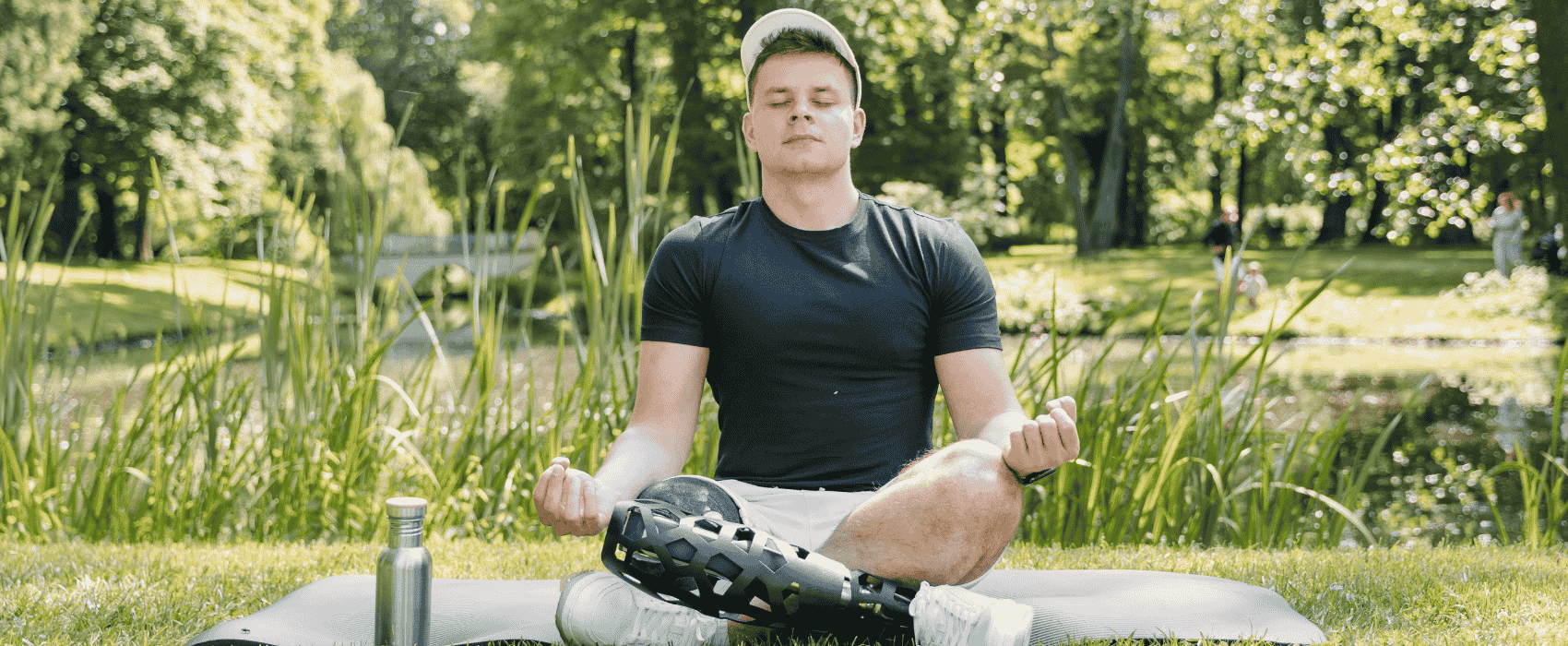
Maintaining an active lifestyle is an integral part of improving your physical, emotional, and mental well-being. It can help improve mood, keep chronic illnesses at bay, and support longevity. However, some people may experience incontinence during physical activities, especially female athletes. While high-impact sports can put a strain on the pelvic floor, there are some things you can do to help reduce the risk of involuntary leaks during sports and other physical activities you love. Here, we'll go over a few essential tips on how to manage urinary incontinence while practicing and engaging in sports.
The Link Between Urinary Incontinence and Sports
Although maintaining good fitness is a great way to promote overall well-being, it can take its toll on your body. In fact, there's a relatively high correlation between urinary incontinence and sports, especially in certain athletes. To better understand this connection, let's consider the different types of UI along with why leaks may occur.
Types of Incontinence That May Affect Athletes
Several different types of incontinence can occur, but the most common during exercise is stress incontinence. Stress urinary incontinence (SUI) is when pressure or "stress" is placed on the abdominal muscles, causing involuntary leakage. It can occur even with minimal force, such as coughing, sneezing, laughing, and running. Many sports with some degree of impact, even if it's not as intense as football or rugby, can also trigger urine leakage.
Urge incontinence can also occur during sports and physical activity, but it's less common. Certain movements can stimulate the bladder and cause an urgent need to urinate, along with varying temperatures and even increased bladder tension.
Why Leaks Happen During Exercise
There are several reasons why incontinence occurs. Individuals who experience SUI may have weakened or damaged pelvic floor muscles or urethral sphincters, which are often seen in pelvic floor dysfunction. However, even the increased intra-abdominal pressure from impact sports can cause incontinence after prolonged stress on the pelvic floor. Hydration levels and specific movements can also play a role in UI. Therefore, it's important to talk to your doctor to better understand the cause of SUI and how to manage it based on your specifications.
Unfortunately, sports-related incontinence, especially SUI, is much more prevalent in females than in males. This is mainly due to anatomical and physiological differences. Any sport that involves intra-abdominal pressure on the pelvic floor can, over time, lead to incontinence, which is why proper form and strategic exercises are essential.
Urge urinary incontinence, on the other hand, can be caused by overactive muscles that trigger an involuntary urine leakage even if the bladder isn't full. There are several underlying causes for this as well, including things like nerve-related conditions, bladder irritation, bladder inflammation, medication use, aging, and even lifestyle habits. Sports can be a trigger for some, as the nervous system can be stimulated in complex ways, causing misfired signals from the brain to the bladder.
While Exercises Can Lead to Urinary Leakage?
There are a few different types of exercises that can make incontinence worse. Depending on your daily routine and requirements, you can always make modifications or stick to lower-risk activities to avoid leaks.
High-Risk Activities and How to Modify
Some of the highest risk exercises that can trigger incontinence include:
- Running
- Jogging
- High-impact aerobics
- Weightlifting
- Gymnastics
- Tumbling
- Tennis
- Squash
- Basketball
- Football
- Handball
In addition to the exercises above, improper technique and general core weakness can further contribute to UI. If you're unsure about either, it's recommended to work with a physical trainer to ensure you're doing what you can to support the pelvic floor during workouts and practices. Using support garments or reducing the intensity level can also help reduce pressure on the bladder and alleviate symptoms.
Which Exercises or Sports Support the Core and Are Lower Risk?
For those who find it challenging to maintain continence during high-impact sports, but don't want to give up an active lifestyle, there are options. You can change the type of sport you participate in or make modifications while strengthening your pelvic floor muscles and core. Some great options include the following:
- Swimming
- Water Aerobics
- Cycling
- Walking
- Pilates
- Yoga
If you continue to experience urinary incontinence despite ongoing efforts, it's best to see your healthcare professional and look at additional treatment options.
9 Tips to Manage Incontinence During Sports
While it might not be the first thing you think about when playing sports, bladder health for athletes is important. To help reduce the prevalence of urinary incontinence during sports activities (and daily life), consider the following tips.
1. Choose the Right Protection
Wearing the right incontinence supplies can make a big difference in your confidence and comfort. Look for incontinence pads or guards that are specifically designed for movement and moisture absorption. Incontinence-specific underwear can also provide better protection than standard athletic wear, and many products are now discreet, breathable, and designed for active use.
2. Focus on Fluid Management
While it’s tempting to limit fluids to avoid leakage, dehydration can actually irritate the bladder and worsen symptoms. Instead, practice smart hydration. Drink water consistently throughout the day and try timed voiding, emptying your bladder before workouts or during scheduled breaks. Avoid common bladder irritants like caffeine, citrus juices, and carbonated drinks before exercise.
3. Prioritize Good Form
Improper movement patterns can put extra strain on your core and pelvic floor muscles. Whether you’re lifting weights or doing cardio, maintaining proper posture and alignment helps distribute pressure more evenly and reduces the risk of leakage. If you're not sure how to perform an exercise or feel like you're not targeting the right muscles, it may be best to hire a personal trainer.
4. Practice Proper Breathing Techniques
Holding your breath during exertion increases intra-abdominal pressure, which can overwhelm the pelvic floor. Instead, try to focus on exhaling during exertion (like lifting or jumping) and inhaling during rest phases. Coordinating breath with movement helps protect the core and reduce unnecessary stress on the bladder.
5. Strengthen Your Pelvic Floor
Strong pelvic muscles are essential for bladder control. Luckily, there are several exercises you can do to strengthen the pelvic floor.
Kegel exercises are the classic go-to for strengthening pelvic muscles. To perform a Kegel, tighten the muscles you would use to stop urination, hold the contraction for a few seconds, then relax. Repeat several times a day, building endurance over time. Consistency and proper technique are key.
If you’re unsure whether you're engaging the right muscles or want personalized guidance, a pelvic floor physical therapist can assess your needs and help create a customized plan. These specialists are trained to work with both men and women and can assist with everything from muscle strengthening to posture and movement strategies.
6. Eat a Healthy, Bladder-Friendly Diet
Certain foods can trigger or worsen incontinence symptoms. Opt for high-fiber foods to prevent constipation, which can place pressure on the bladder. You should also limit spicy foods, acidic fruits, and artificial sweeteners if they seem to exacerbate your symptoms. Since everyone is different, keeping a food diary is a good way to identify your triggers and better understand your dietary needs.
7. Get Plenty of Rest and Recovery
Fatigue and stress can also reduce your body’s ability to control urinary urges. Therefore, it's important to ensure that you get enough sleep and allow time for recovery between workouts. Rest supports muscle repair, including those in the pelvis, and helps maintain optimal bladder function.
8. Be Prepared for the Occasional Accident
Even with precautions, leaks may still happen from time to time. Wear dark, moisture-wicking clothes during workouts to reduce visibility and discomfort. You may also want to carry a small bag with a change of clothes, wipes, and extra protection just in case. Most importantly, don’t let fear of leaks stop you from enjoying the activities you love.
9. Talk to Your Doctor
If incontinence is new, getting worse, or interfering with your life, don’t hesitate to reach out to your doctor. There is a range of treatment options available, including medications, pelvic floor therapy, biofeedback, and in some cases, surgery. A referral to a urologist, gynecologist, or pelvic floor specialist can help you find the best course of action for your unique situation.
If you're managing urinary incontinence and looking for reliable, discreet products to support your active lifestyle, Byram Healthcare is here to help. We offer a wide range of high-quality incontinence products delivered right to your door, with insurance support and personalized customer care.




